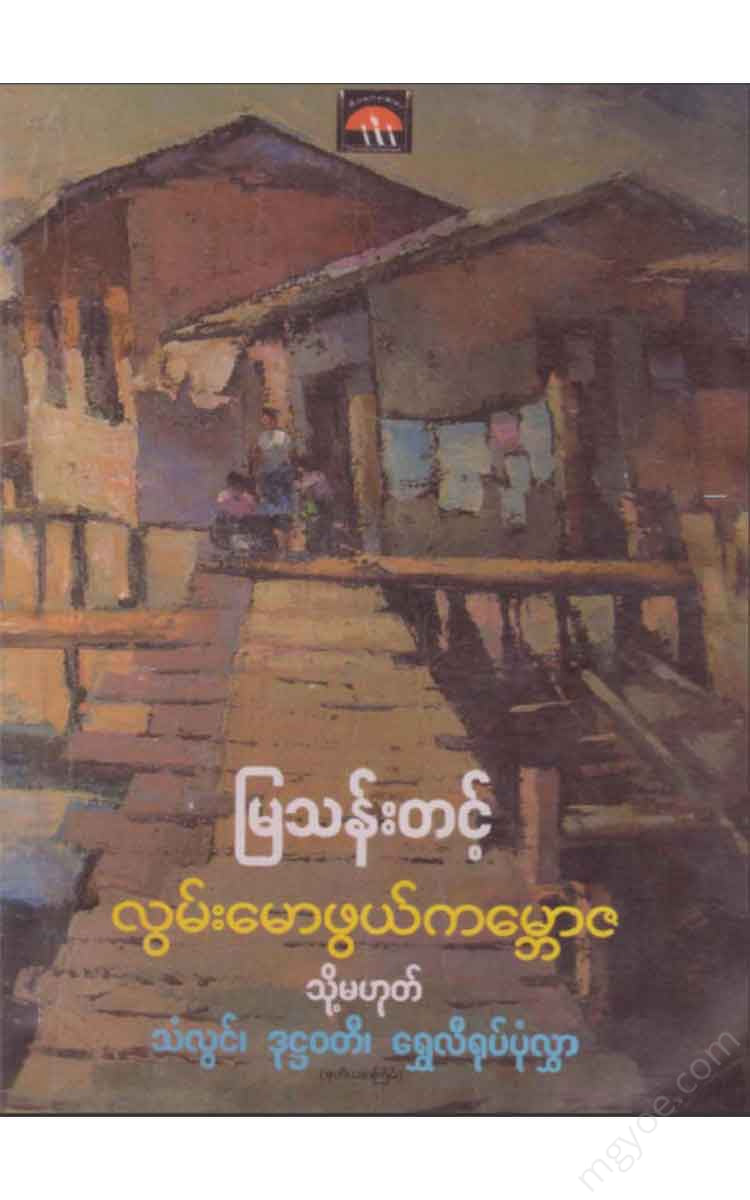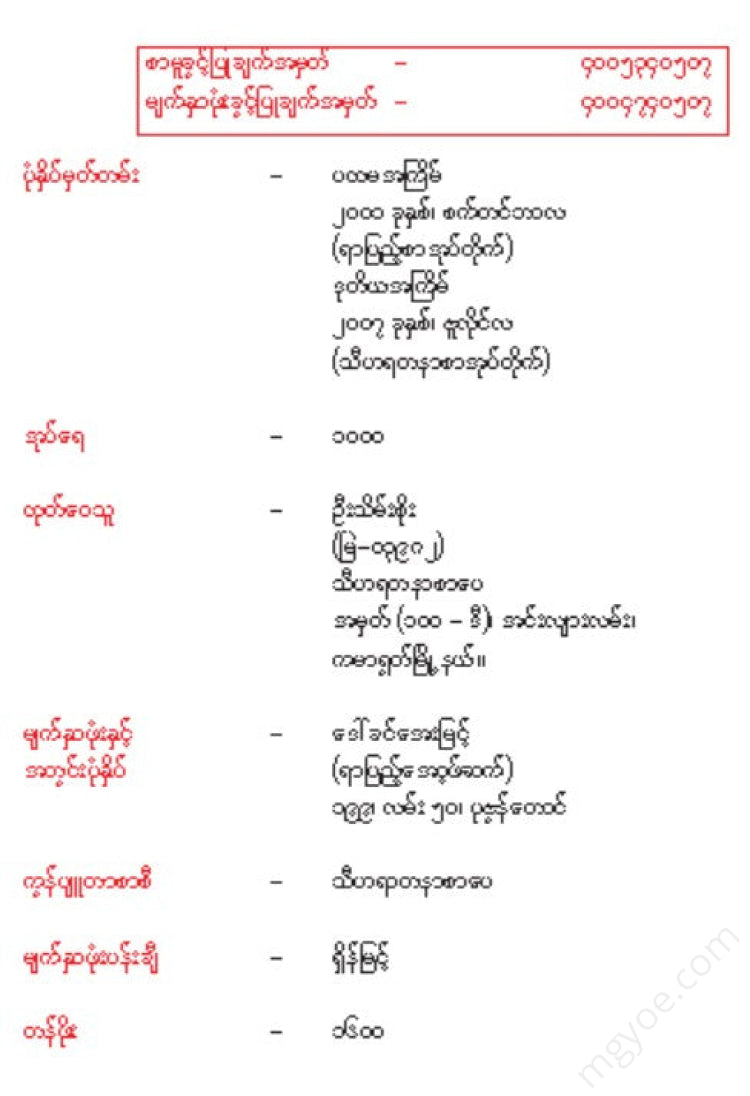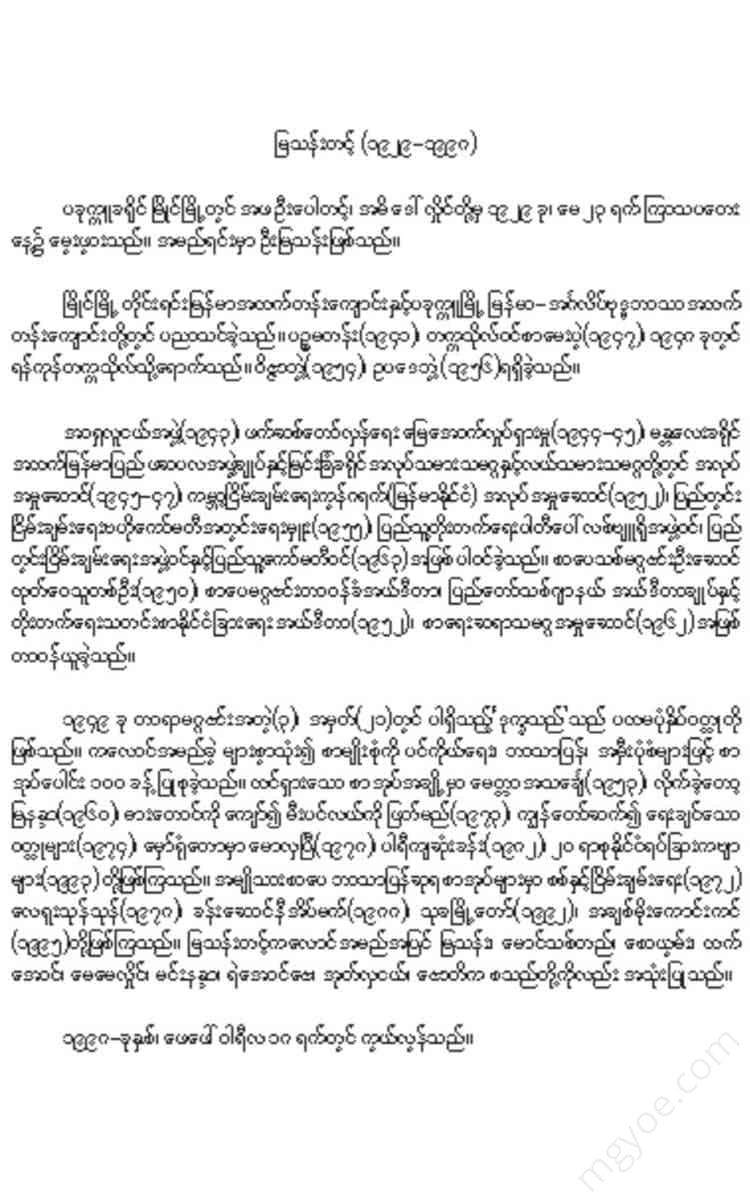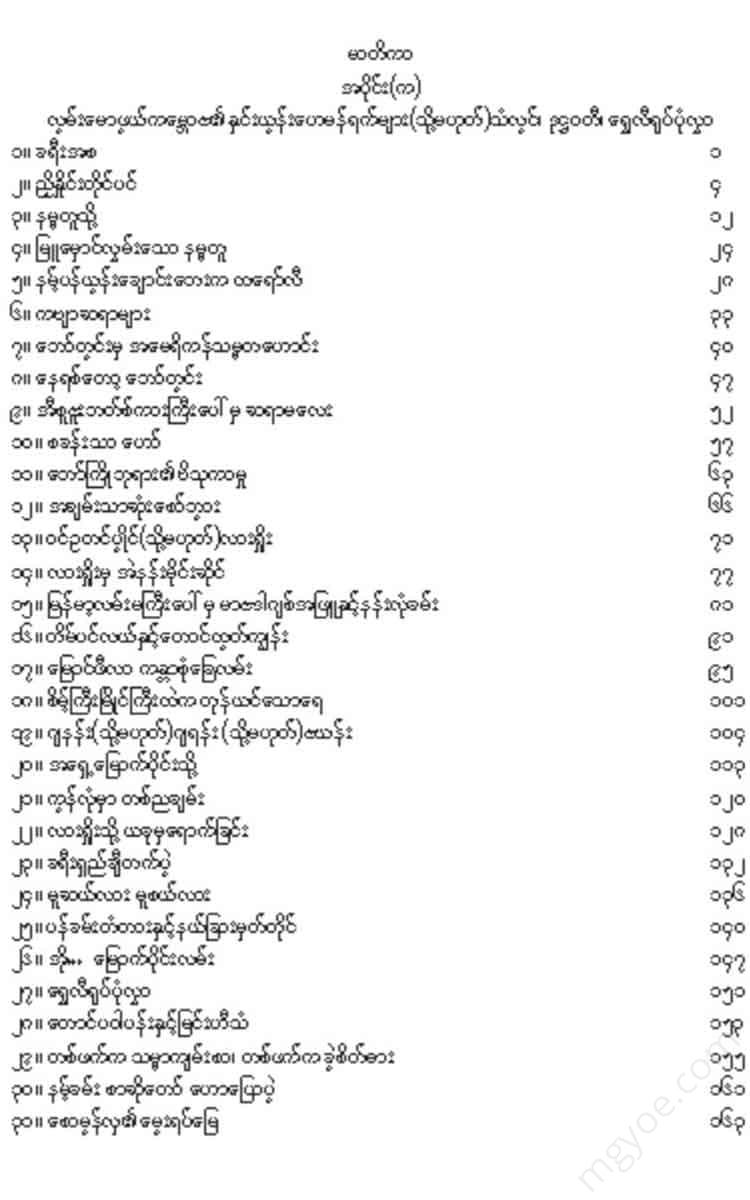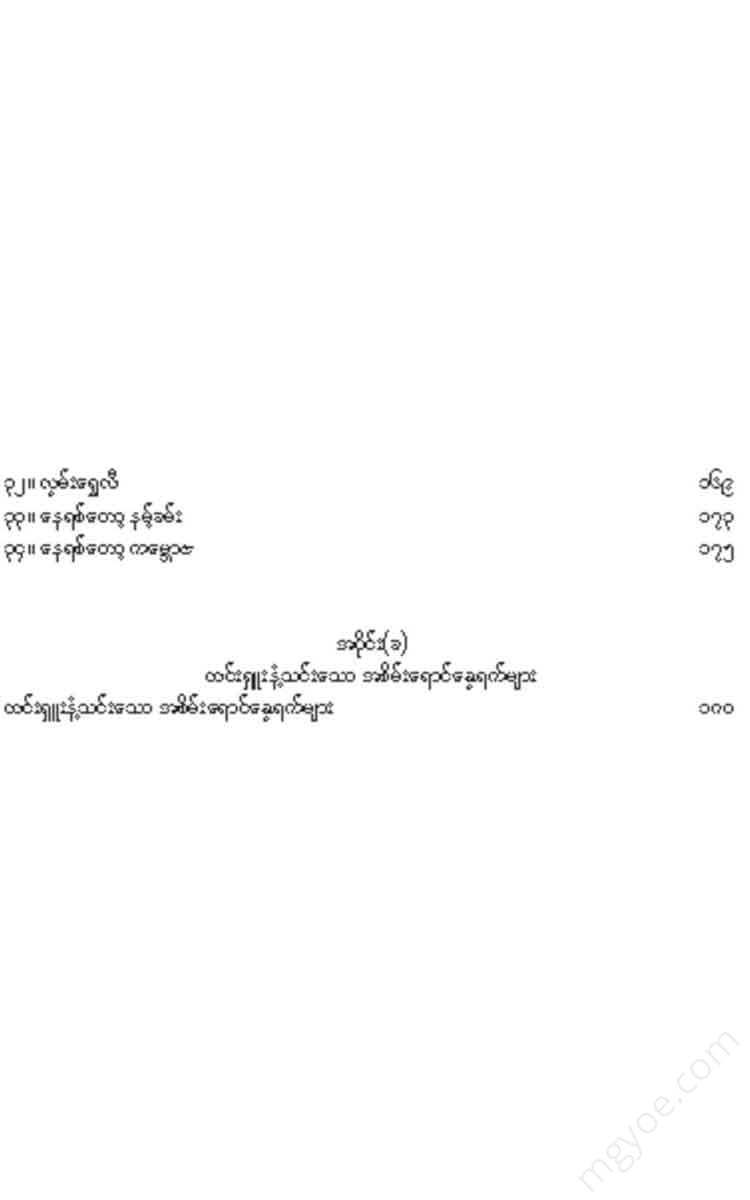Other Websites
Mya Than Tint - A nostalgic song or song of Than Lwin, Duhta Wadi, Shwe Li
Mya Than Tint - A nostalgic song or song of Than Lwin, Duhta Wadi, Shwe Li
Couldn't load pickup availability
The beginning of the journey: "... The snow is falling, the wind is blowing gently, the clouds are falling, oh, the wind is blowing, the clouds are falling..."
I looked down at the mountains covered in blue mist, white snow, and rolling hills. I could see the sun shining brightly through the clouds on the billowing white clouds. On the Shan Yoma Mountains, the sun was not shining, it was not shining. In some places, the sun was shining brightly, but in many places, there was fog, snow, and rolling hills, oh... every time I looked up, it was dark...
In 1958, when I wrote the novel “I Followed You,” I wrote about the scenery of Shan State seen from the plane at the beginning of the story. At that time, I had not yet been to Shan State. I had only been to the edge. Therefore, I looked at records, maps, historical documents, photographs, and paintings about Shan State and imagined the Shan State that I had not yet visited. When I felt and described it with emotion, the scenery of Shan State that I wrote about was breathtaking. A critic once said, in a tone that could not be divided between criticism and praise, that I had written without having visited Shan State.
The work of a writer, especially a novelist, is to combine facts and imagination. When he takes his information, he can take it from experience. When he cannot take it from experience, he can take it from writing. It doesn't matter where he takes it from. What matters is whether the information he presents is true or false.
When I wrote “I Followed My Nandar,” I took information from written sources. I took a little bit from personal experience. Then I added ideas to that information. In this way, I think “I Followed My Nandar” becomes a fairly complete painting of the Shan state of that period.
Then I arrived in Shan State not long after. Every time I landed, I looked down from the plane. I could see the mist, the green forest, the red soil, the brown mountains, and the yellow sunflowers. The scenery I wrote about in “Follow Me, Myananda” was not far from the real scenery.
Once, I was looking at the scenery of Shan State from the window of an airplane. As I was looking, I remembered the story of Prince Pyin Si's Hnin Yun Kha He Man Yodya. He said, "Oh... every time I look, it's foggy..."
It is true that it is foggy in every direction. The landscape of Shan State is foggy with snow, mist, and mountain smoke. However, the snow has not melted yet. I cannot say that it is snowing like snow. Yet, the metaphor of Prince Pyin Si has stuck in my heart. When I see the winter with the snow falling, the words “Snowing like snow” automatically come to my mind.
When we arrived in Shan State, it was the third of December, and the fog was still spreading in Shan State. The cold was still there. The weather was at its most severe. I had been to southern Shan State before. Now I was going to northern Shan State. A place I had never been to before.
Dr. (U) Kambawza Khin Hlaing, the chairman of the Lashio Literary Lovers Association, has been inviting me for a long time. He has also invited me to attend poet lectures. He has also invited me to visit. It seems that Kambawza Khin Hlaing wants writers to come to his northern Shan State. It seems that he wants writers to study about northern Shan State. However, for some reason, I did not go. This year, Kambawza Khin Hlaing has invited us since July. I also plan to go.
When I heard the name “Kambawza Khin Hlaing”, I suddenly thought it was a pen name. Thinking back, it was not just a pen name. I remembered that it was a name I had heard in school. Kambawza Khin Hlaing and I had come to Yangon University not long after the war. However, we had never met in person. He was at the Lanmadaw Medical College. I was at the Uttara (Shwebo) Hall, opposite Judson College. At that time, he was not yet a doctor. He had not yet written any letters. Since then, his name has been Kambawza Khin Hlaing.
When he became a doctor, he did not remove the name Kambawza. When he wrote or took a pen name, he did not remove the name Kambawza. When he said his name, he would say Doctor Kabar Khin Hlaing, Dr. Kambawza Khin Hlaing. He did not like it when he said Kambawza U Khin Hlaing. So it seems that the name Kambawza Khin Hlaing became his real name. It is not a pen name, nor is it the name of a writer, but rather a person who added his hometown to his real name. As far as I know, only two people in Myanmar have ever been named. One was U Thayarwady Maung Maung, who was a political leader during the British era, and the other was Kabarza Khin Hlaing. .
As we were returning from Lashio to Kyaukme, we greeted his mother, who was over 70 years old. “Why did you name your son Kambawza Khin Hlaing?” I asked.
“I don’t know, when my mother was born, there was no Kambawza. But when she went to school, she changed her name to “Kambawza Khin Hlaing”. One thing is that she is from the Kabarza region. She is a real stonemason, and the other thing is that her father opened a workshop called Kambawza. Now my younger son, Maung Kyaw Sein, is running it. That’s why I think he took the name Kambawza | Khin Hlaing. Now the names Kambawza and Khin Hlaing are inseparable, it has become his real name.”
Kabazar Khin Hlaing's mother told me.
Yes. The world and Khin Hlaing are inseparable. Not just in name. In real life, the world and Khin Hlaing are inseparable. He has become a pillar in the all-round development of the ethnic groups in northern Shan State.
I am not making this conclusion too far. I am saying this after traveling extensively throughout northern Shan State and hearing the opinions of people from all walks of life.
When we were going to northern Shan State, we had to gather the necessary medicines, warm clothes, etc. We went during the most severe weather in northern Shan State. The journey was long. Kaba Khin Hlaing sent us a plan to send us to all the places we should and could go to in northern Shan State. He also told me to stay there for a month or two if I could.
We negotiated the schedule with Ko Hla Myaing (Editor-in-Chief of the Workers’ Daily) in Yangon, who was the organizer on behalf of Kambawza Khin Hlaing. We couldn’t give them the dates they wanted. We weren’t in Yangon on those dates. We had to go on a literary trip. So we had to go back and forth between Lashio and us. Finally, Lashio postponed the date we were supposed to come. However, as it got closer, there was no flight to Lashio on the date we had given. So Lashio told me to come on the earliest date that a flight would be available. Here, we had to coordinate with other plans. We had to coordinate with the relevant townships to complete the literary events that had already been accepted before Lashio. We also had to coordinate with the relevant townships to postpone some events because we would be late returning from Lashio. After that, we agreed to set a date with Lashio.
We are the poets and travelers from Lashio and northern Shan State: me, Aung Thin, Chit Oo Nyo, and Katun Myay Za.
We were originally supposed to leave Yangon on December 21st, but there was no bus that day, so we left for Lashio a day early.
The flight that left Yangon Airport at 7:30 AM arrived at Mandalay Chan Myat Thashi Airport at 9:30 AM. The sun was shining brightly at Chan Myat Thashi Airport, but it was different from Yangon. Even in the bright sun, it was still cool.
The plane landed in Mandalay for about half an hour, loading and unloading passengers, and then headed for Lashio. During the entire flight from Yangon to Lashio, BC only served a cup of weak coffee and three or four sweets. I thought that was a decent meal for his trip. However, serving coffee in an old paper cup was not a good idea. The old paper cups that the coffee was served in were not even colored. They were dirty and dirty. The flowers and petals on the paper cups were also very delicate. They were stained. The edges of the cups were also worn.
The flight attendants were polite. They announced that they would be there to help the passengers if they needed it, and it was the first time I heard that kind of thing on a BAC flight. The Burmese accent of “Thank you for your patience” has not disappeared.
As soon as we left Mandalay Airport, we could see the vast mountains and vast swamps from the plane. They were truly vast swamps. In some places, the mountains were embraced by vast clouds. Although we could only call them vast clouds,
It is not possible to distinguish between snow, clouds, and fog. The snow, the fog, and the clouds do not cover the mountains and forests. They do not cover them like a crown. Some clouds, some fog, and some snow wrap around the waists of the mountains. Some lie in the lap of the mountains. Some lie in the lap of the forests.
They are lying at the foot of the Taung So Myaing. Some are even rubbing against the steep side of the mountain wall. I don't think any painting can capture such a beautiful and mysterious landscape.
